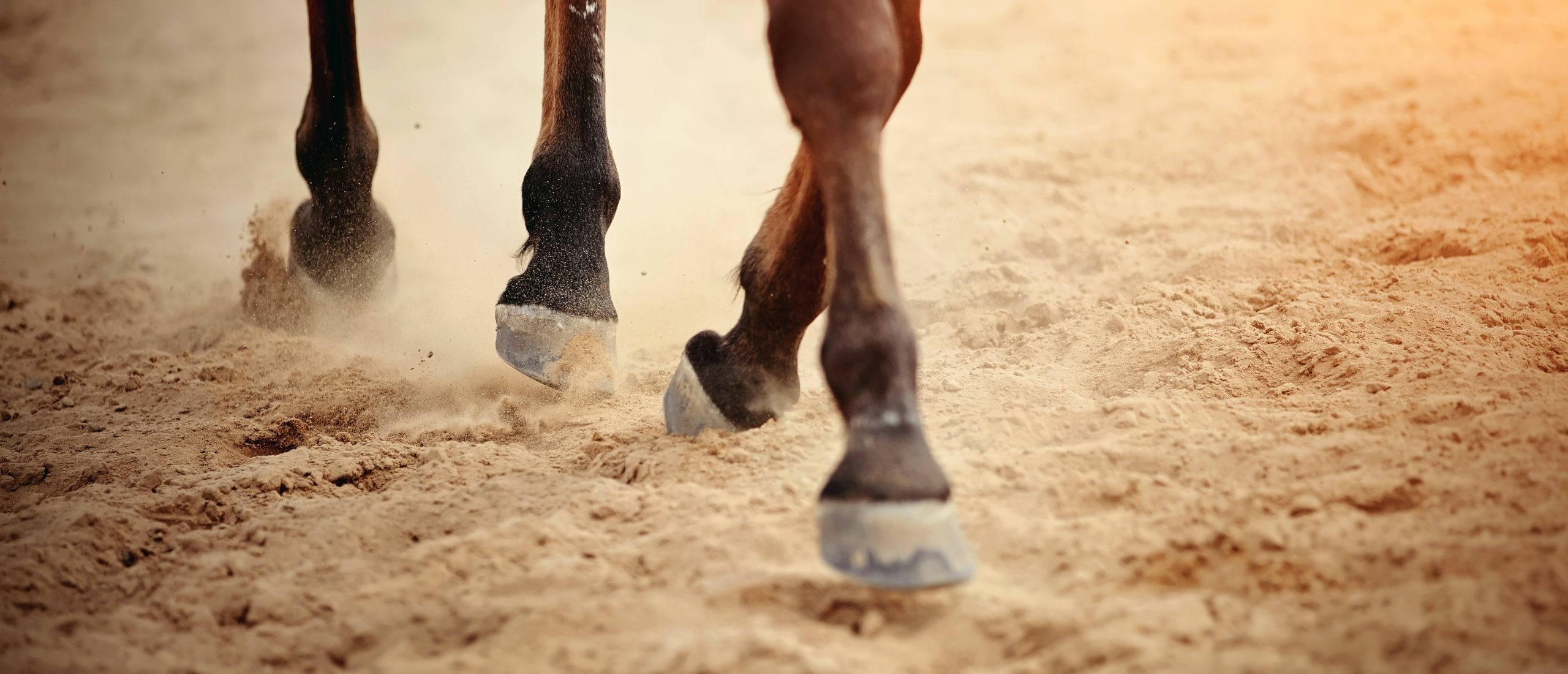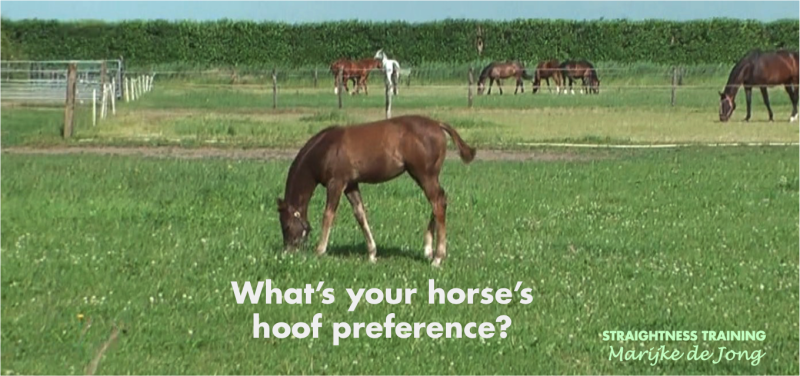
Front Legs
Did you know that, just like humans, horses are left- or right-handed?
This means they have a hoof preference.
So some horses are right-handed, which means they have a better coordination and more strength in their right front leg compared to their left.
And of course for other horses it’s just the opposite: they are left-handed.
This left- and right-handedness in the front legs is one of the dimensions of natural asymmetry.
![]()
In most cases we see that:
* left-bended horses are right-handed
* right-bended horses are left-handed
But how do we know what is our horse’s hoof preference?

Well, first of all, a hoof preference is easily seen with:
Foals
Foals are unequal in using their front legs from birth.
Because of their long legs and short neck, they often spread their legs wide: you can see that they always have one leg further forward and one leg further back.
Now, this forward leg is also called the ‘grazing leg’ and carries most of the weight.
And the hoof that carries less weight is often more steeply shaped.

With adult horses, their hoof preference is often less clear.
But we can find out anyway!
If we want to discover whether our horse is left- or right handed, we can do the:
Hoof preference test
Here’s how to do it:
- Place some food about 5 m (15 feet) in front of your horse.
- Encourage your horse to come forward to eat the food.
- When your horse begins to eat the food, note whether the left or right hoof is placed furthest forward.
- Do this 5 more times.
The results of the hoof preference test can be as follows:
- A. Your horse places the left hoof forward most of the time. Your horse appears to be left-handed.
- B. Your horse places the right hoof forward most of the time. Your horse appears to be right-handed.
- C. The outcome seems 50-50. It could be that your horse has no preference and is ‘ambidextrous’, that means that your horse is able to use both hoofs with equal facility.
Now, what if our horse appears to have a preference for either his left or right front leg?
First of all, it’s good to know that in the wild it actually makes sense to have a hoof preference.
This is because all legs have their own ‘specialism’ and in emergencies, one side of the body will take the lead.
But problems can occur when the horse is being ridden.
You see, because the weight on both front legs is not equally divided, the extra weight of the rider is mostly carried by one of the front legs.
Regrettably enough this can lead to the following:
Symptoms & problems
During riding, these issues may arise from hoof preference:
- The horse tends to catch the weight on the shoulder of the stronger front leg, thus putting more weight on that leg.
- When the weight of the rider is added and the horse is not straightened, the horse will tend to carry this additional weight also on the stronger front leg.
- Due to the unequal distribution of weight, the rhythm of the gaits can be disturbed.
- The length of the steps can also become uneven because the hind leg on the side of the stronger front leg cannot swing forward.
- The imbalance increases and strain injuries can occur. In serious cases, this can lead to navicular disease (podotrochleitis) and other forms of (permanent) lameness.
- After riding, some horses place their overstrained front leg more forward to take the pressure off.
- Because of the left- or right-handedness, one shoulder will be more muscular than the other.
- This ‘handedness’ can lead to a horse that always jumps onto one canter lead, no matter if it is on the left or on the right bend.
So a lot of issues can occur.
That’s why it’s so important that we recognize the unequal use of the front legs and know about the symptoms.
What’s more, we have to train our horse to develop equal strength in both front legs.
So the symptoms and problems disappear or, even better, will never occur.
This is where we need Straightness Training.
What about your horse?
So what’s your horse’s hoof preference?
Do you recognize some of the symptoms and problems mentioned above?
Maybe there are no problems yet but you are concerned that your horse puts too much weight on one of his front legs during riding.
Either way, let’s help your horse to find a better balance:

